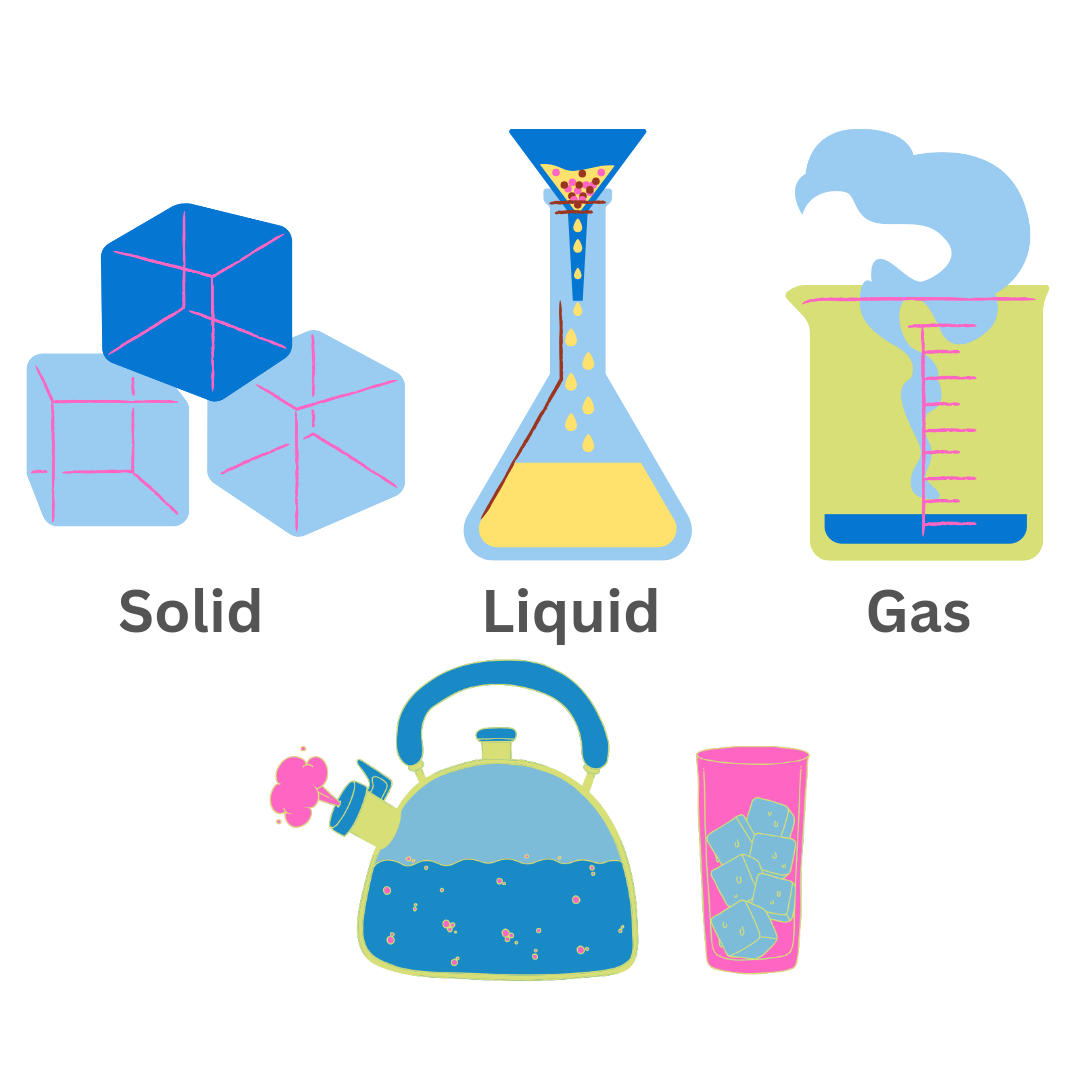Introduction:
Matter is the fundamental substance that makes up everything in the universe. It consists of tiny particles called atoms and molecules. It comes in three main forms: Solids, Liquids, and Gases.
What is Matter?
Matter is everything we can see, touch, or feel. It is like the building blocks of the universe. Everything around us, from school bag to the air we breathe, is made of matter. So, matter is anything that has mass (it is heavy) and takes up space (it has size).
1. Solid State of Matter:
Solids are things that are hard and keep their shape. The tiny bits that make up solids are packed tightly and do not move around much. Imagine building a wall with bricks; the bricks represent the particles in a solid.
Example: Desk, a book, or a piece of chocolate are all solids. They have a fixed shape and volume.
2. Liquid State of Matter:
Liquids are like the in-between state. The particles in liquids are packed closely but have the ability to slide past one another. This allows liquids to flow and take the shape of their container, like water in a glass.
Example: Water, milk, and even juice are liquids. They can change shape, but they have a certain amount (volume) that stays the same.
3. Gaseous State of Matter:
Gases are like the invisible wanderers. The tiny particles in gases are spread out and move quickly in all directions. Gases do not have a fixed shape or volume; they fill whatever space they are in.
Example: The air we breathe is a gas. It is everywhere around us, filling rooms, and even outdoor spaces.
Changing States of Matter:
Matter can change from one state to another. This happens when we add or remove heat and pressure. Here are some essential state changes:
Sublimation:
Some substances can change directly from a solid to a gas like dry ice (that is solid carbon dioxide). It turns into a gas without becoming a liquid first. This change is called sublimation.
Melting and Boiling:
When we heat things, they can change too. Think about ice turning into water when we warm it up. This is called melting. And when liquids get really hot, like water boiling into steam, that is called boiling.
Conclusion:
Solids, liquids, and gases are the three main states of matter. Solids keep their shape (like a book), liquids flow (like water), and gases fill any space (like air). Whether it is a solid chair, a liquid soda, or the air we breathe, matter and its changes are everywhere. By playing with temperature and pressure, we can understand these cool transformations better and learn more about the world of science and the stuff all around us.



Leave a Reply